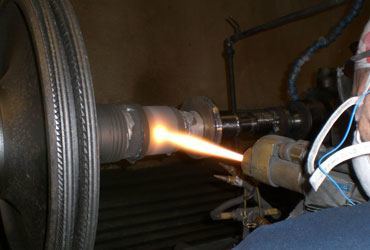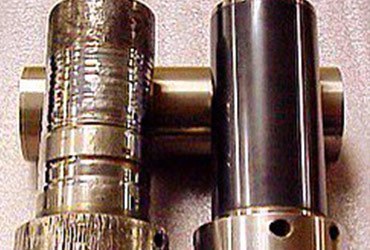HVOF Coatings For Pumps: How It Can Improve Wear Resistance
Pumps are exposed to corrosion, wear, or cavitation damage in service, which diminishes pump efficiency and component life. Thus, surface coatings may function as practical solutions to address this issue.
Tungsten Carbide Based Coatings
CMC materials are composed of a combination of highly compact (regularly < 0.5 mm) corrosion-resistant ceramic particles (usually tungsten carbide) within the ductile metal matrix (usually cobalt and nickel alloys), bringing about a substance bearing a toughness akin to those of the ceramics, while maintaining flexibility akin to that of metal substances.
The hardening ceramic stage or metal binder option is mainly based on chemical compatibility. Typically, the smaller the tungsten carbide particles, the higher the binder percentage and the stiffer the coating. While this is an essential distinction, it remains susceptible to corrosion, wear, or cavitation damage as it operates, which reduces pump efficiency or machine life, or substantially raises the life cycle costs of the pump. These degrading mechanisms gradually corrode surfaces.
Thermal Spray
Thermal spray remains highest in flexibility with regards to binder alloy form, while you can spray over an extensive range of different carbide binder phase alloys, inclusive of:
- WC-10Co4Cr- Durable wear with average wear resistance
- WC-10Ni5Cr – Durable wear with lasting sea-water resistance
- WC-NiCrMo (Hastelloy C binder –
- Durable wear with sea-water wear resistance.
HVOF Process
Applying the HVOF process, you can spray over carbide coatings using highly refined carbides (i.e., regular carbide size < 3 µm) or a high carbide mass fraction more significant than 80%. This offers better wear resistance to fine abrasive particles. Coating density is limited to about 0.5 mm, whereas these coatings do not fit with applications in which the coatings might be susceptible to intense thermal or mechanical stresses. HVOF coatings are thus often employed in light to moderate wear applications or with a corrosive medium.
Due to the intense processing temperature or duration, any other process will limit minimal carbide size or percentage. Tinier carbide particles may degrade at such high processing temperatures, leading to the development of undesired rigid and fragile stages in the binder alloy or a drop in the carbide fraction. Therefore, a PTA or laser carbide coating may hold a typical carbide size of about 200 µm (or 0.2 mm) or a carbide mass percentage lower than 60%.
Also, the binder ingredients are confined to nickel-boron-silicon or nickel-chrome-boron-silicon alloys, holding comparatively much less chrome content, thus restricting the applications of such coatings to specific corrosive surroundings. Such processes might then lead to thick coatings (i.e., >2 mm), while these will often be able to take high thermal or mechanical stress. To this end, PTA and laser clad carbide coated shaft sleeves often get employed with slurry pump uses.
Coatings For Water Resistance
Regarding a brief outline of HVOF coatings for pumps and valve parts in intense service applications, this hopefully offers you several insights into selecting the appropriate type of HVOF coatings for pump solutions. It becomes evident that the pump user may gain from building a connection to a professional and established coating solutions provider to help to ensure that the optimum coating solution gets diagnosed and applied well. This may lead to a substantial extension for the working duration of pump components or heighten pump optimization over its working duration, leading to a significant diminishing in the working duration charges of the pump.



